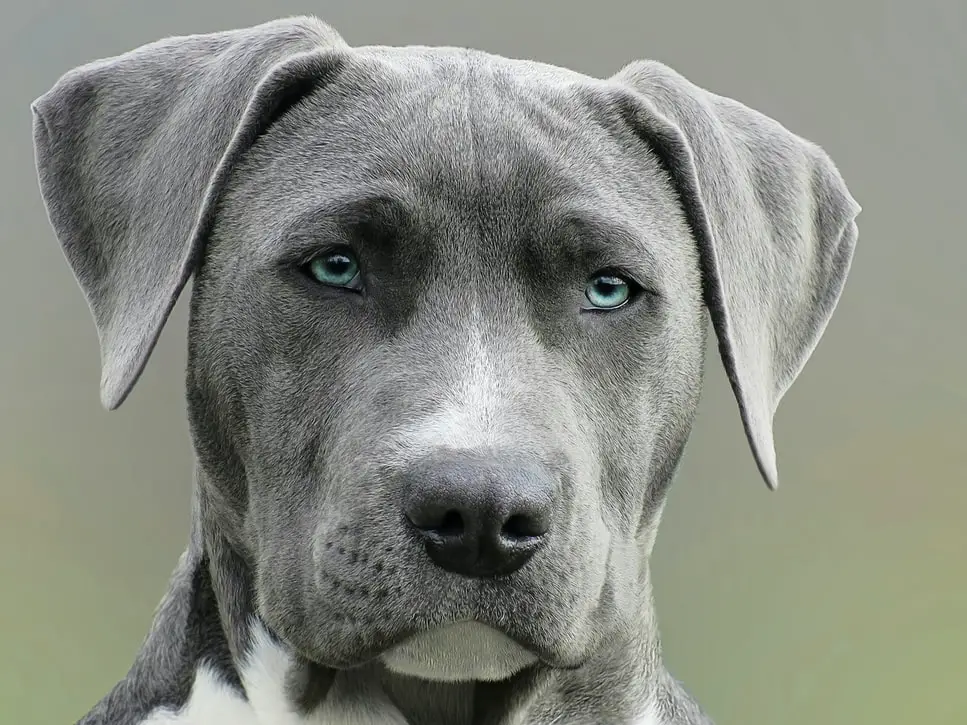Most dog owners would agree that life is better with a dog. They offer us companionship, devotion, love and even entertainment. Spending time with your canine companion often makes us physically and mentally healthier.
Dogs encourage us to keep active and offer us quiet company. The more we know about our dog, the better we can care for them, enjoy them, and hopefully increase their longevity.
In this Ultimate Guide to Dog Care: Adult Dog Edition, you will learn how to take care of a dog. Or more specifically, how to take care of an adult dog rather than a puppy or senior dog, by taking a glimpse into your dog’s natural instincts. Also, you can make educated food choices and explore the many options of mentally and physically exercising your dog.
We hear about puppy socialization, but what about continuing socialization for adult dogs?
Learning how to take care of a dog is important, we’ll learn the importance of grooming, common dog health concerns and options for preventing illness.
- Fun Fact: The United States of America has the greatest population of dogs, with France having the second highest.
Enjoy learning about how to take care of a dog and how you can enrich their lives.
Dog Breeds: Your Dog’s Purpose
Our dogs were bred with a purpose in mind, to perform a job! Knowing your dog’s natural instincts will allow you to know how to challenge them and reach their potential.
Dogs were bred for many reasons: Protection. Companionship. Service. Therapy. Farm work. Hunting. Scent work. Pulling sleds & carts.
Knowing your dog’s purpose can be fun and enlighting. Every dog breed is placed in one of the seven dog breed groups as per the American Kennel Club (AKC) standard. Here is a sampling:
Sporting Dogs

Breeds: Labrador Retriever, German Shorthaired Pointer, Cocker Spaniels, Brittany, Golden Retriever, Irish Setter, Boykin Spaniel, Chesapeake Bay Retriever to name a few.
Purpose: Sporting dogs were bred to assist hunters find and retrieve wild game birds.
Characteristics: Friendly, naturally active, and lively spirited dogs that enjoy hunting and field activities. They are willing to please and enjoy regular exercise.
Hound Group
Breeds: Bloodhound, Coonhound, Dachshund, Greyhound, Bassett Hound, and Beagle, to name a few.
Purpose: Hounds were bred to chase and mark prey.
Characteristics: Strong prey drive. Independent with good stamina. The long-legged hounds are known for explosive speed and powerful noses to trail quarry. Some hounds make the distinct “baying” sound.
Working Group
Breeds: Boxer, Rottweiler, Great Dane, Akita, Bernese Mountain Dog, and Doberman Pinscher are just a few in this group.
Purpose: These dogs were designed to have a job that assists humans such as pulling carts, pulling sleds, guarding livestock, and protecting homes.
Characteristics: Powerful dogs known for their strength and intelligence. They are naturally protective and require proper training and socialization.
Terrier Group
Breeds: West Highland Terrier, Scottish Terrier, Bull Terrier, Cairn Terrier, Smooth Fox Terrier, Miniature Schnauzer, Rat Terrier plus twenty-three more breeds make up this group.
Purpose: Smaller terriers were bred to go underground to hunt small rodents. Taller terriers were bred to dig out varmints. They were used to guard the family home and barn.
Characteristics: Smart, feisty, playful, stubborn, courageous, and sometimes mischievous. They are strong agile dogs that thrive on training.
Toy Group
Breeds: Cavalier King Charles Spaniel, Chihuahua, Maltese, Papillon, Toy Poodle, Shih Tzu, Pug and Yorkshire Terrier to name a few.
Purpose: They are bred to be affectionate and attentive companions.
Characteristics: Sociable, adaptable to various lifestyles, and full of energy. Personalities vary breed to breed.
Non-Sporting Group
Breeds: Bulldog, Dalmatian, Poodle, Bison Frise, Chow Chow, French Bulldog, Shiba Inu, Shar-Pei, plus thirteen additional breeds.
Purpose: A diverse group of dogs primarily bred for companions.
Characteristics: There are a range of differences in this group from watchdogs to lap dogs.

Herding Group
Breeds: Border Collie, German Shepherd, Welsh Corgi, Australian Cattle Dog, Belgium Malinois, Collie, Old English Sheepdog to name a few.
Purpose: They were bred to move livestock and protect livestock.
Characteristics: Instinctual ability to herd or move animals and sometimes people. Smart, energetic, require purposeful exercise and respond well to training.
You can learn how to take care of a dog by knowing their potential, how to challenge them to be their best, and at the same time learn more about them. You can enjoy your companion dog, herding dog, or working dog when you challenge them accordingly.
Your dog might not fit in a definitive dog breed group. There are obvious reasons for this. Perhaps you’ve adopted it from a shelter or human society and its genetic history is unknown.
Related Articles:
- A Review of the 5 Best Slow Feed Dog Bowls
- A Review of the 5 Best Retractable Dog Leashes
- A Review of the 5 Best High Fiber Dog Foods For Anal Gland Problems
- The 5 Pawsitively Best Dog Nail Grinders
How To Take Care Of A Dog and Adult Dog Adoption
According to the ASPCA (American Society for the Prevention of Cruelty to Animals), approximately 3.2 million shelter animals are adopted each year in United States.
Adopting is a viable choice for adding a canine companion to your life.
Learn how to take care of a dog by being prepared before their adoption and incorporating them into your daily routine.
While you’re full of joy and excitement, your new adult dog may be under much stress. Life in a shelter is stressful, which can contribute to dog anxiety.
8 Tips For How To Take Care Of A Dog Before And During Adoption
- Preparing your home by removing items that could be harmful to a dog, such as house plants. Picking up items you do not want chewed, such as toys, electrical cords, and remote controls.
- Gather the supplies needed for a dog. Many people find using a metal dog crate and pet gates to be very helpful supplies.
- Offer your rescue a designated safe place in your home. It’s best to gate off rooms in your house and slowly introduce them to the whole house over a period of several weeks or even months.
- Explore the yard with your new dog. Allow them to sniff their new surroundings.
- Supervise greetings with other family members and pets. Keep introductions calm and short.
- Enroll your new dog in a local dog training class. They will need to know common vocabulary and socialization.
- Decide on a routine for your dog, including feeding times, elimination schedule, and daily exercise.
- Visit your veterinarian for a health check-up. Your visit will include weighting your dog, a fecal sample (to test for parasites), a blood draw (to test for heartworms), looking at their ears, eyes, teeth, and coat condition.
3 Red Flags with Your New Adopted Adult Dog
- If your new adult dog barks and growls at you excessively, they might have physiology or physical issues. See a professional trainer and animal behaviorist right away to figure out what your dog is trying to communicate.
- When your new dog seems too calm, they could be hiding an illness. An unresponsive dog will need to promptly see a vet.
- When considering a dog with a bite history, make sure you don’t have children or elderly in your home. Ask for the results of the dog’s temperament test. Commit to training the dog (and the humans in your home), preferable with help from a professional trainer/behavioralist.
It will take weeks and even months to get to know your new adult a dog. Be ready to exhibit a good dose of patience and understanding. This is an essential step in learning how to take care of a dog.
One important wellness need for your dog is proper nutrition, that goes beyond the brand name of the dog food.
Related Articles:
- A Review of the Top 5 Best Brooms For Dog Hair
- A Review of the 5 Best Peanut Butters for Dogs
- A Review of the 4 Best Dog Shampoos for Itchy Skin
- A Review of the 5 Best Dog Brushes For Short Hair
- A Review of the 6 Best Dog Harnesses for Hiking
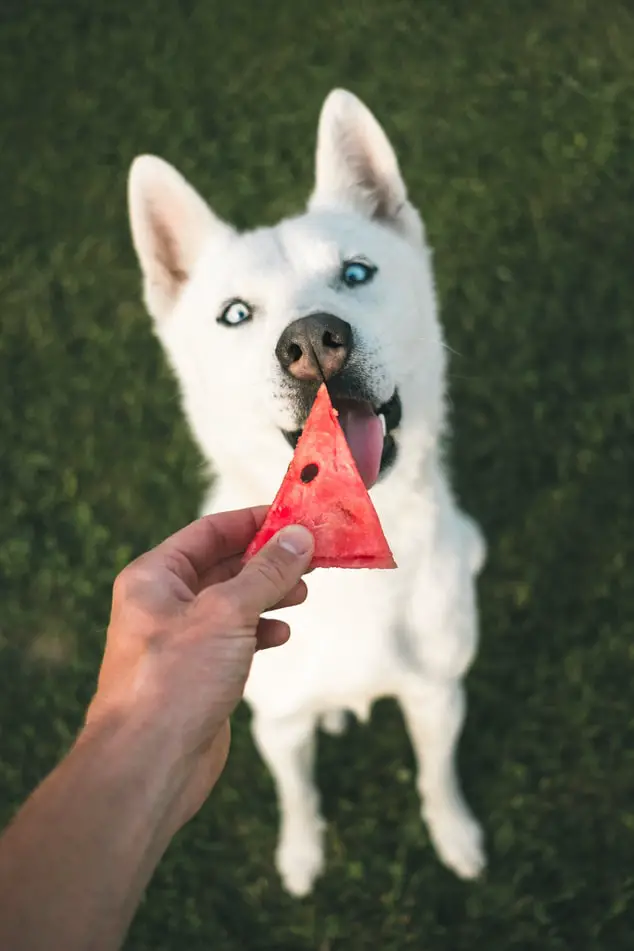
How To Take Care Of A Dog With Food & Nutrition
When learning how to take care of a dog nutritionally, you’ll want to maintain your dog’s overall well-being and cell maintenance, by feeding them a well-balanced diet fit for canines.
How do I know when my pup is officially an adult dog?
When your dog reaches 90% of its expected adult weight. Depending on the dog breed, most dogs switch from puppy food to adult food somewhere between 9 months old and 12 months old. Giant breeds could take an additional several months.
What ingredients fulfill proper nutrients for my dog?
Real meat, meat meal, digestible carbohydrates, vegetables, fruits, fats, vitamins, minerals, natural preservatives, and water.
When choosing dog food, read the label carefully. The first several ingredients should be real meat and possibly meat meal. The appropriate protein percentage is between 18% – 26%. Your dog’s dietary needs might change depending on the breed and dog’s age.
- Dogs eat mainly meat; however, they are not strict carnivores, they eat healthy grains, organ meats (such as liver), select vegetables and select fruits as part of a balanced diet.
The Importance of proper nutrition:
- Immune system function: the ability to fight disease
- Maintain energy levels,
- Healthy weight; not over or under weight.
Types of Dog Food
You’ll want to choose a dog food that fits your budget. Keep in mind, premium food equals higher nutritional density. Learn how to take care of a dog with choosing the right form of food.
- Dogs from the sporting class (retrievers, spaniels, pointers) and working class (Alaskan Malamute, Great Pyrenees, Boxers, Mastiffs, Bernese Mountain dogs) need a certain standard of dog food to maintain good health and live a healthy life.
Six Forms of Dog Food:
- Canned food
- Semi-moist food
- Kibble – the most economical choice
- Freeze-dried raw food
- Dehydrated food
- Homemade cooked or raw food
You can choose from any of the options above based on their nutritional content, your budget, your dog’s nutritional needs and your available time.
How do I switch dog food brands?
Most dogs have a sensitive system, in that they produce the type of enzymes and acids appropriate to digest the food they are eating. When switching dog food, you’ll want to go slowly and gradually, as their system will be making adjustments.
Amount of Food
The amount of food you feed your dog is based on your dog’s breed standard, age, and activity level. Give careful attention to your dog’s body condition to determine their portion size.
- Ask your veterinarian if you need further guidance in this area.
Related Articles:
- A Review Of The Top 5 Best Carpet Cleaner Solutions for Dog Urine
- A Review Of The Top Best Silent Dog Whistles
- A Review Of the Top 5 Best Artificial Grasses For Dog Potty
- A Review of the Top 5 Best Dog Carrier Backpacks
- A Review of the 5 Best Dog Frisbees
How To Take Care Of A Dog By Knowing When To Use Supplements
Depending on your dogs breed, age, current diet, and health condition, supplements might be a good fit for your dog.
Dog’s that benefit from supplements include:
- anxious dogs
- dogs with itchy skin
- known food or environmental allergies
- after they had surgery
- nutritional deficient dogs
Ask your veterinarian about supplementation for your dog. Just as some doctors vary in their knowledge of dietary supplements, the same holds true for veterinarian medicine.
Supplements Designed for Canines:
- Digestive supplements like powdered prebiotics / probiotics
- Omega-3, 6, 9 oils; like Hemp Oil
- Natural hip and joint supplements that contain glucosamine, chondroitin, MSM. Including vitamin C, as that allows the dog to absorb the ingredients.
- Immune System boosters / coat supplements
5 Tips On How To Take Care Of A Dog by Improving Their Diet
Become a label reader. Product labels list the ingredients in order, from the greatest amount to the least amount. If you’re not familiar with an ingredient, or you are unsure if it’s healthy for your dog, do a quick internet search.
Introduce fresh whole foods. Fresh food is full of live enzymes and nutrients. Choose certified organic ingredients when possible. (Examples; boiled eggs, kale, pumpkin)
Do not overfeed. You’ll want to limit treats and be aware of your dog’s body composition.
Consider purified water. Most tap water contains over 100 different chemicals. Clean water is important to your dog’s longevity.
Clean dishes. Wash your dog’s food and water dishes daily. Vinegar works well as a chemical-free solution that will not leave a soapy residue in the dishes.
Some foods and drinks that we consume every day might cause our dog to get very sick. Become familiar with these dangerous foods.
What foods should I never feed my dog?
Not all human food is healthy for your dog. Learn how to take care of a dog by knowing what foods will make your dog very sick and could even cause organ failure.
Related Posts:
- How to Stop a Dog from Pooping in the House at Night
- How to Potty Train an Older Dog in an Apartment
- How to Grind Your Dog’s Nails
- How to Get a Dog To Take a Pill
- Learn The Secrets Of How to Clip a Dog’s Nails Safely!
How To Take Care Of A Dog And 12 Foods Dangerous to Dogs
- Xylitol – this alcohol sugar can be in sugar-free gum and even some peanut butter.
- Moldy foods
- Cherry pits
- Alcoholic drinks
- Candy
- Chocolate
- Grapes & Raisins
- Avocado
- Caffeinated beverages
- Nuts
- Yeast (found in uncooked dough)
- Citrus
If you think your dog consumed one of the above dangerous foods, call you veterinarian immediately. They will advise on the best ways on how to take care of a dog.
Keeping your adult dog on a feeding schedule will also keep them on an elimination schedule. If necessary for your adult dog, house-training or potty training will go smoother having them on a schedule.
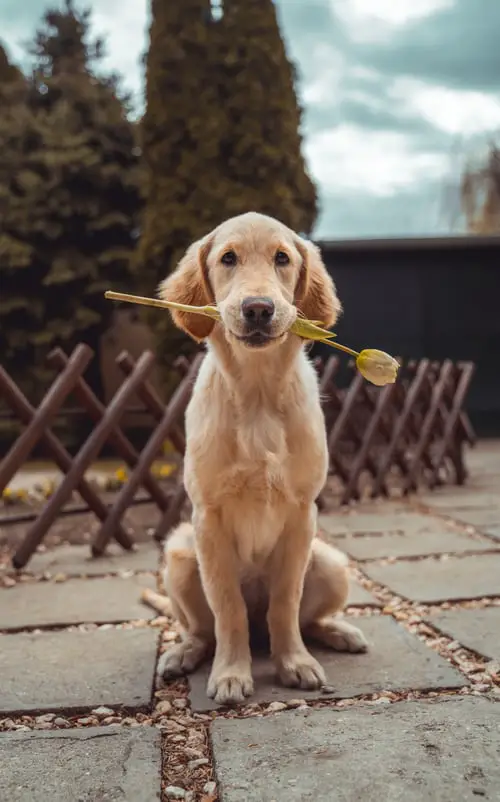
How To Take Care Of A Dog and House Training
There are a few reasons you might find yourself needing to train an adult dog. Learn how to take care of a dog that needs assistance with house training.
You might have adopted an adult dog that never learned, they might have never been in the house, or they learned how to eliminate on a concrete surface or in a liter area.
Training an adult dog to urinate or defecate outdoors should be easier then teaching a new puppy. Adult dogs have the capacity to go longer periods without eliminating due to better bladder control.
Related Articles:
- A Review of the 5 Best Waterless Shampoos for Dogs
- A Review Of The Top 5 Best Halloween Costumes for Dogs
- How to Stop a Dog from Pooping in the House at Night
- How to Potty Train an Older Dog in an Apartment
- How to Grind Your Dog’s Nails
5 Tips For How To Take Care Of A Dog By Teaching Them To Be Housetrained
- Establish a routine. Feeding times, elimination times, and exercise is best around the same time very day. Dogs thrive on routine. Be predictable for your dog!
- Praise after elimination.
- Take your dog out after they sleep, wake up from a nap, eat, in the afternoon and before bedtime.
- Supervise. Supervise. Supervise.
- Use a metal dog crate or gated off area for your dog. If you are unable to supervise your dog, place them in the dog crate or safe gated area.
If you have another dog in the household, your new adult dog will most likely eliminate in the same area.
- Keep in mind dogs do not like to eliminate where they rest, play, or eat. Dogs also do not eliminate indoors out of spite or revenge.
Know the Signs
Dogs usually give us a few seconds notice when they need to urinate or defecate. Know the signs and house training will be easier for dog and humans.
Exercise or movement often triggers the need to eliminate. Here are other signs that your dog needs to go outside:
- Wandering away from the area where they were playing
- Circling while sniffing
- Looks distracted
- Sniffing at the floor or carpet
- Looking at the door or pacing near the door
- Beginning to squat
- Wandering over to an area they had previously eliminated
How To Take Care Of A Dog and FAQ about Adult Dog House Training
Q. Why has my adult dog recently started having accidents in the house?
A. There are several reasons for sudden accidents in the house. A change in environment, their routine has changed, due to humans work schedule changes or kids go back to school.
Moving into a new house can cause accidents or even the loss of a family member can cause them. Part of learning how to take care of a dog means that you will have to understand that sometimes big changes mean that your dog may need patience from you in dealing with them.
Q. Do smaller dogs take longer to house train?
A. Not necessarily. They do have a smaller bladder, which means they need to be taken out more often. Sometimes owners don’t “finish” training a small dog, as small accidents are easily clean up.
Q. How do I know if my new adult dog is fully house trained?
A. Dogs will indicate when they need to go out to urinate or defecate. Once you have taught them what door(s) to go to, they may sit by the door, bark or whine at the door or pace near the door.
Q. What is the best way to clean up messes inside the house?
A. Use cleaning supplies that do not contain bleach or ammonia. Many household cleaners contain ammonia which closely resembles the scent of urine to a dog. Thoroughly cleaning the accident spots with an enzymatic cleaner will eliminate lingering odors.
Q. What about using doggie diapers?
A. If you rescued or adopted an older dog, they might not be housetrained. Doggie diapers could be used in case an accident occurs.
They are also handy as a back-up when visiting friends and family. You still need to be diligent about training them to go outdoors.
Q. Does using a “potty bell” increase my success?
A. Some dogs and owners do very well with a bell. The dog will ring the bell when they need to be let outside to eliminate. This system works well for travelers as well because you can bring the bell with you.
Related Articles:
- How to Obedience Train Your Dog
- How to Leash Train Your Dog
- How to Get Rid of Dog Warts at Home
- How to Housebreak or Potty Train Your Puppy
- How to Clicker Train Your Dog
The bell becomes more guesswork when you have a smarty dog that will ring the bell for attention or just likes to go outside to play. Using a bell system is up to the individual dog and owner.
- Keep in mind, it’s not your dog’s fault they have to go. We need to be consistent on teaching them the proper location and noticing their indications.
REMEMBER: Verbally reprimanding your dog will only teach them not to eliminate in front of you. As humans, we can do our part by being consistent, timely and patient!
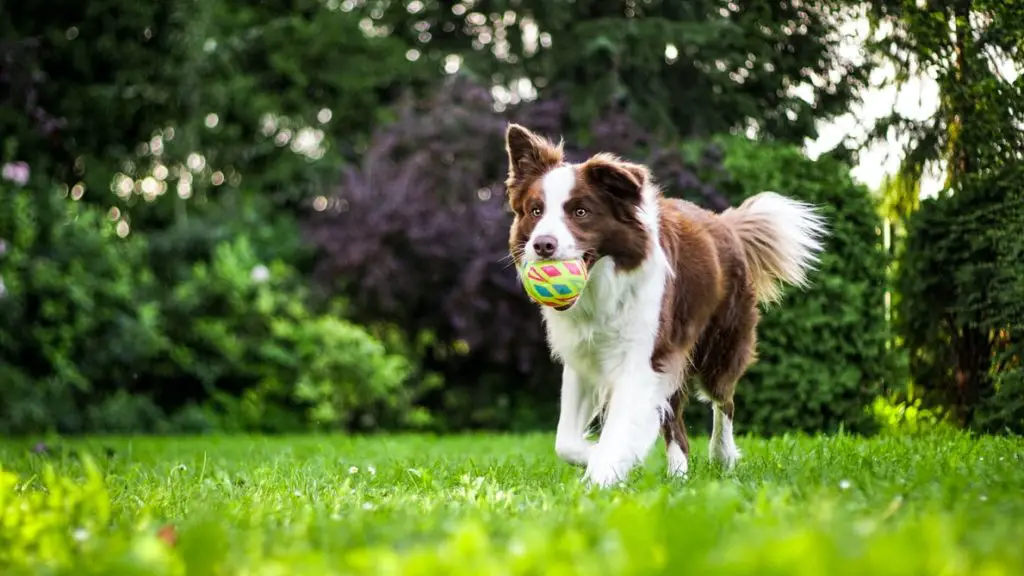
How To Take Care Of A Dog and Exercise
Learn how to take care of a dog by understanding they will thrive on daily exercise, play, and mental stimulation. Physically your dog will maintain a healthy weight, great muscle tone and healthy metabolism. Therefore, you will need to incorporate exercise into their daily routine.
- Both mental exercise and physical exercise are important for a happy, healthy dog!
Physical exercise can be done in many ways, in the form of informal play, intentional games or structured activities like walking and swimming.
How To Take Care Of A Dog and The Value of Play
Puppy’s that were allowed adequate play time often become adults that like to play. Dogs learn canine and human body language when they play, therefore if this was omitted as a puppy, know that your dog might be lacking these skills.
- Learning how to take care of a dog by using appropriate dog toys will be beneficial for both dog and owner.
Your dog will be able to stay physically and mentally fit when given the opportunity to make play part of their routine. Dogs are known to try to extend play time when possible; whether it’s playing with their human or another dog in the family.
Play can be a great workout, teach manners, and relieve stress (for both human and dog.)
How To Take Care Of A Dog with Physical Exercise
Exercise leaves a dog satiated, meaning they are less to likely participate in destructive behavior. On the average, active dogs need a minimum of 30 minutes of daily exercise.
However, learning how to take care of a dog means that understanding each dog has different exercise requirements based on their breed and individual needs.
Sporty breeds like Labrador retrievers, Brittanys, and Spaniels are just a few breeds that need adequate daily physical exercise. These breeds lean towards enjoying retrievals, (play fetch), hiking and swimming.
Flat-faced breeds, known as brachycephalic breeds, such as pugs, bulldogs, and shih tzus have breathing restraints. These breeds can overheat quickly, so take care with exercise.
Working breeds, such as the Doberman and Bernese Mountain Dog are built for long hikes. They don’t like intensity, but rather consistent exercise.
High energy breeds, such as the border collie needs intentional physical and mental exercise daily. They easily can handle 60-90 minutes of different forms of exercise.
Related Articles:
- How to Train a Dog to Run Next to a Bicycle
- How to Teach an Older Dog New Tricks
- How to Train a Deaf Dog
- The Top 12 Fun and Easy Dog Tricks
- How to Train a Dog
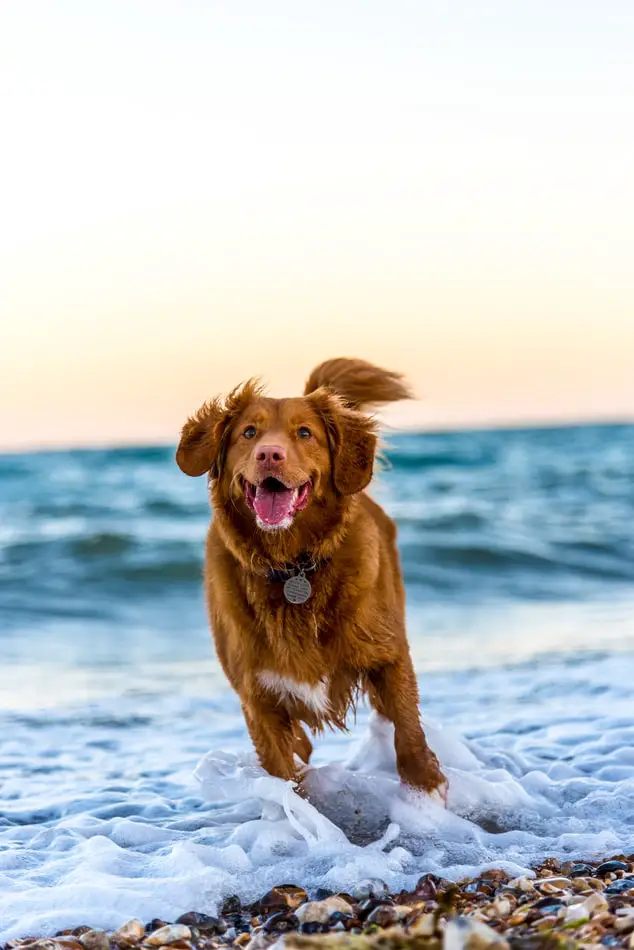
Learning How To Take Care Of A Dog And FAQ about Exercise
Q. How long do I wait after my dog ate before exercising?
A. Dogs and puppies all need to wait at least an hour and up to two hours after eating. Deep chested breeds, such as Akitas, Bassett hounds, German Shepherds, & Great Danes are just a few breeds that will need to wait at least two hours after eating.
Q. Is it okay to make my dog exercise?
A. Running, biking, and excessive ball throwing could all be considered forced play with your dog. Some dogs know when they are done with exercise, they might be overheating, tired, bored, or other various reasons. Be ready to stop when your dog is tired.
Q. Will my dog overheat in warm temperatures?
A. When choosing to exercise, check the air and ground temperature to make sure your dog doesn’t overheat. Plan on taking short breaks and providing shade and water for your dog.
- Be conscientious of the ground temperature. Touch it with your bare foot or hand before allowing your dog to walk on it. Dogs can easily burn their paws on hot surfaces.
Q. Is it possible to over-exercise my dog?
Yes. You will need balance with exercising your dog. Too much exercise can lead to injuries and a decline in health.
Dogs that have been predisposed with hip and joint issues will need to take care with jumping and endurance activities. Swimming is a low impact activity for dogs. Indoor pool facilities designed specifically for dogs can be found all over the country.
- Always watch for signs of fatigue in your dog. Signs may include increased panting (with the tongue hanging out to the side), slowing their pace, or stopping all together.
Related Articles:
How To Take Care Of A Dog with Mental Exercise
You can tire your dog out with good mental games! There are several mentally challenging games you can engage in with your dog. Quiet mental games can be of great value as well.
Find It. Choose a favorite toy or high value treat. Show your dog the item and then place it a few feet away from them. Then say, “Find it”. Once you think they have grasped that step, keep extending the distance. Eventually you can hide it under a bowl or place it in a different room. Always have them begin at the same place each time, such as a small rug or dog bed.
Homemade Obstacle Course. Depending on the size of your dog and home, you can create an obstacle course almost anywhere. Fenced in backyards are ideal.
Dog owners have been creative with obstacle courses in their garage, on their deck or even in the house.
Food Stuffed Toys. Quiet mental exercise is just as valuable!!
Choose an appropriate style toy that is designed to be stuffed with food. Kong, West Paw, and Starmark are a few brands that make a variety of sizes and styles.
You can mix a little kibble in with canned pumpkin or a mashed banana and stuff it into the toy. Freeze it. Bring out the toy on rainy days or busy mornings.
Anytime you would like them to keep mentally busy. As with any toy, supervise your dog.
- Dog’s love new toys! Always supervise your dog with toys, and never leave them alone with new toys in their crate or safe area.
How To Take Care Of A Dog And Learning The World of Dog Sports
Dog sports can be a wonderful bonding and engaging time for dogs and their humans. Some sports are breed specific, but many span a wide range of breeds, including mixed breeds.
Agility. This fast-paced obstacle course is designed for the human (handler) and dog to work together. The tunnels, jumps, ramps, balance board, and weave poles all challenge the dog physically and mentally.
Agility reduces boredom and strengthens the connection between dog and human. The dog works on obedience skills while paying attention to their human.
Dock Jumping. This sport is also known as “dock dogs” or “diving dogs”. If your dog loves water, knows how to swim and retrieve, this sport is for them!
You toss your dog’s favorite toy into the pool and then on command they jump from a platform into the water to retrieve it.
Scent Work. Also known as Tracking. This sport taps into what a dog does best, smell! An object that has scent on it (either human or essential oils) is hidden.
The handler and dog need to work together to track and find the scent. It’s a wonderful confidence builder in dogs.
Flyball. If your dog likes to run, jump, and retrieve, you might try this relay race. Flyball involves the dog working with teams of four dogs.
Your dog steps on a panel that triggers the flyball box to release a ball. The dog retrieves the ball, jumps over hurdles and brings it back to the handler. Then the next dog is released.
This list is only a sample of the types of dog sports you can explore. More dog sports include Rally Obedience, Lure Coursing, Disc Dogs, Canine Freestyle, and Herding Trails. These dog-focused sports allow for the dog to tap into their instincts, interact with their human, and exercise all at the same time!
Exercise is a wonderful way for you to bond with your dog and how to take care of a dog at the same time. You’ll both incorporate exercise into your daily routine.
Related Articles:
- Ultimate Guide: How To Take Care Of A Puppy
- Ultimate Guide: How To Take Care Of A Senior Dog
- The Benefits of Owning a Dog
- Top 12 Tips for First Time Dog Owners
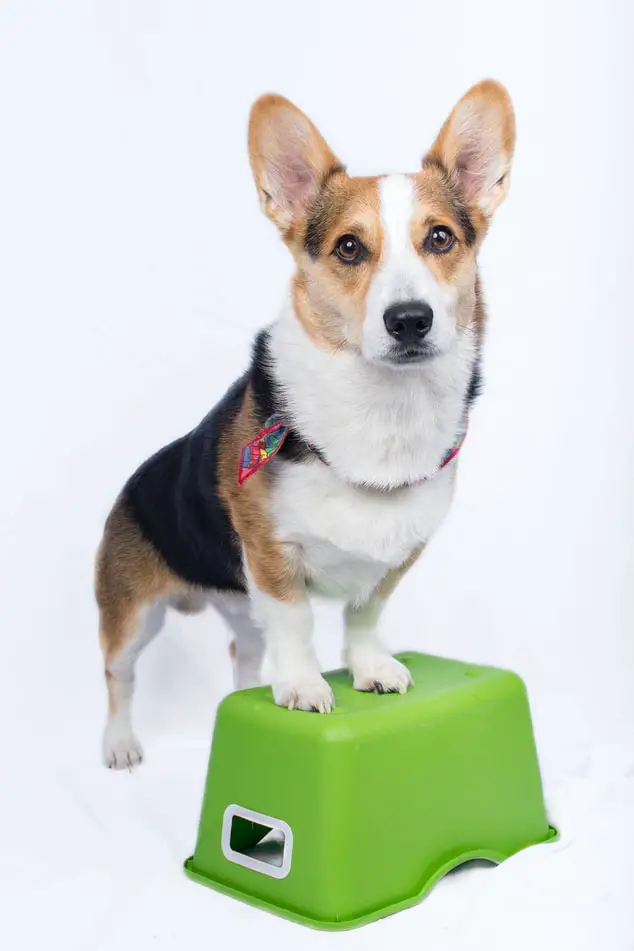
How To Take Care Of A Dog With Grooming
Your dog relies on you to feed them, exercise them, and take care of their physical grooming needs. Grooming is just another area to add to your routine when learning how to take care of a dog.
Grooming entails coat maintenance, cleaning ears, checking eyes, checking teeth, trimming toenails, and cleansing the body and coat.
First, you’ll want to know your dog’s hair type. There are 6 different types of dog coats with variations among the double coated breeds.
6 Dog Coat Types
- Nearly hairless – Chinese Crested
- Smooth/Short Coated – Dachshund
- Wire Coated *- Irish Wolfhound
- Long Coated – German Shepherd
- Double Coated – Bernese Mountain Dog
- Curly Coated – Poodles
*Wire coated breeds may require professional grooming
Goal: Teach your dog to love grooming!
Your dog might squirm or complain the first time you touch their feet or brush their coat. Take a deep breath and praise them for any moment they are quiet and still.
Related Articles:
- How to Cook Marrow Bones for Dogs
- A Review Of The Top Five Best Foods for Hiding Dog Pills In
- A Review of the Top 5 Best Dog Bones For Aggressive Chewers
- A Review Of The Top 5 Best Bone Broths for Dogs
- A Review Of The Top 5 Best Dog Whistles
How To Take Care Of A Dog And The Importance Of Bathing
- cleans their skin and coat
- removes loose hair and dirt
- allows you to examine their skin closer
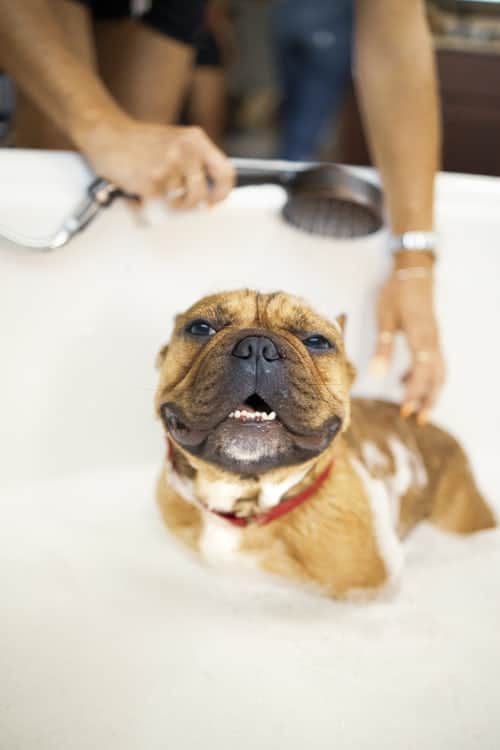
6 Tips How To Take Care Of A Dog With Grooming
- Establish a routine and location for grooming.
- Purchase grooming equipment specific for your dog’s coat type. Clean your tools after each use.
- Organize your equipment; designate a shelf or closet to store your grooming equipment.
- Enlist a helper or helper tool. Grooming is easier with two people, however if you are by yourself, consider a lick pad that suction cups to the tub and/or glass door. Apply peanut butter to the lick pad so your dog is enjoying a treat and getting groomed.
- Choose the appropriate dog shampoo. You can choose from flea/tick shampoos, whitening shampoo for light-colored dogs, hypoallergenic shampoo for sensitive dogs, and oatmeal-based shampoo for dogs with dry skin.
- Dehedding/dematting tip: While bathing your dog, use the dog’s comb or brush to work through the coat as you are rinsing them to rid them of loose hair. This will also help with detangling any mats. Do not wait until the dog is dry.
Related Articles:
- The Best Canned Dog Food for Dogs with Sensitive Stomachs
- A Review Of The Top 5 Best Tactical Dog Harnesses
- How to Build an Outdoor Dog Potty Area on Concrete
- A Review of the 5 Best Dog Muzzles
- A Review Of The Top 5 Best Dog Clickers
How To Take Care Of A Dog And The Necessary Grooming Equipment
Brush and/or Comb. Chose the right brush or comb for your dog’s coat type. You might need multiple brushes for de-shedding your dog.
Scissors and/or trimmers. Trimmers are needed for the breeds that do not shed. Scissors are necessary for those breeds that have hair that needs to be trimmed around their eyes, anus or mouth. Not all breeds need this grooming tool.
Nail trimmers, file and grinder. Learn how to trim nails with nail clippers. You’ll want to trim the nail at a 45% angle. Be careful not to trim the quick, which is made up of blood vessels and nerves. Battery operated files/grinders work to take off any sharp edges on the nail.
Styptic powder is great to include in your dog first aid kit. Should you trim a nail too short, or they break a nail during play, styptic powder will stop the bleeding.
Teeth cleaning brush or spray. One option is to buy toothpaste specifically made for dogs. Dental dog spray can be sprayed on the teeth and gums to remove tartar. Chewing on appropriate toys can clean their teeth. Lastly, another option is to wipe them down after each meal.
Mild dog shampoo. Buy a shampoo that is specifically for dogs. Look for the minimal amount of ingredients. Shampoos that contain oatmeal and aloe are soothing to their skin and nourishing for their coat.
Microfiber towel. These towels are very absorbent and will dry your dog quickly. Some dog coats require blow drying to keep them looking good.
Cotton rounds & Witch Hazel. Cotton rounds and witch hazel are great for gently cleaning in and around the ear.
At what age should I begin cleaning my dog’s teeth?
The first week they are in your home. You’ll make it part of your routine grooming. Ask your veterinarian on how to take care of a dog with suggestions for cleaning your dog’s teeth. Some use a dog toothbrush, dental spray, dental chews or even just wiping down their teeth.
- Routine grooming is key!
Why is trimming my dog’s nails crucial to their health?
Your dog’s nails are an extension of their foot and leg. When the nails are too long it sets off the whole body. Dogs will have the feeling of walking uphill and it will decrease their balance.
- Long toenails lead to long term degenerative changes and pain. The dog will experience pain in their knees, hips, and joints. You might see the dog begin to arch their back to compensate.
Remember to prioritize nail trimming. Professional dog groomers can teach you on how to take care of a dog by advising on grooming specific coat types and any necessary grooming between visits.
You’ll have your dog looking and feeling their best!
Related Articles:
- How to Properly Carry a Dog
- How to Treat a Dog Ear Infection at Home without a Vet
- How to Play with Your Dog
- Rules of How to Walk Your Dog
- A Review Of The Top 5 Best Salmon Oils for Dogs

How To Take Care Of A Dog and Socialization
We all want friendly, confident adult dogs that adapt well to their surroundings. We often associate socialization for the first year of the dog’s life. When in fact, you’ll want to continue socializing your dog for many years.
Why is it important to socialize my dog?
The world can be a scary place for a dog that encounters new sights, sounds, objects and people. As dog owners we want our dog to be confident in our world. It is easiest to socialize before a puppy turns 12 months old.
Perhaps your dog missed that first year of socialization. Your next job on how to take care of a dog is teaching your adult dog that your world doesn’t have to be a frightening.
Prioritize socialization when learning how to take care of a dog and you will reap the benefits for many years.
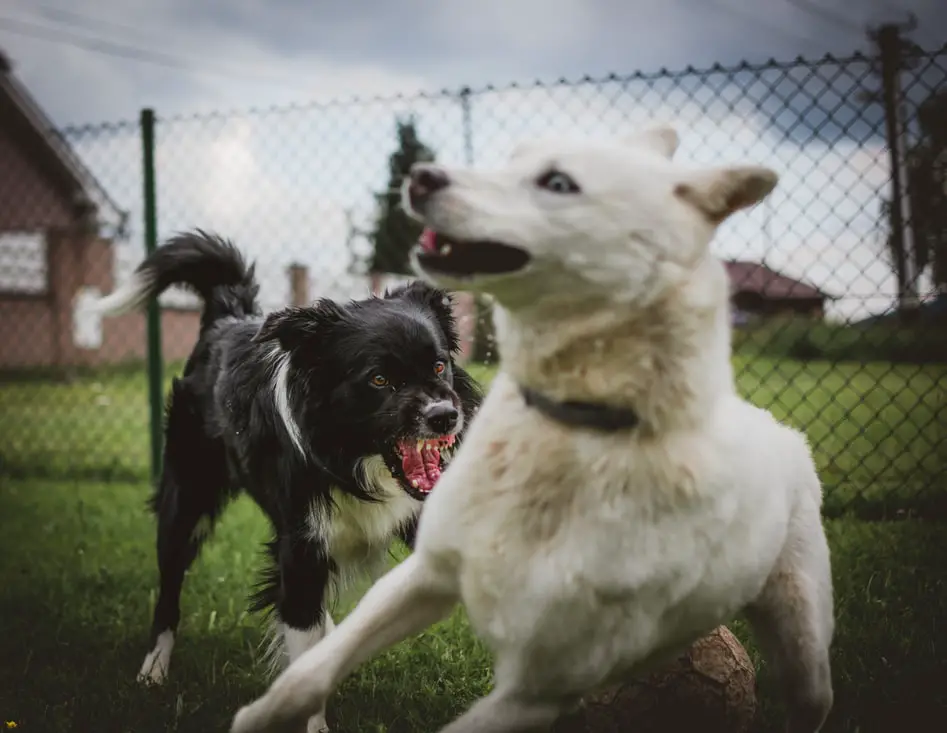
What is next for my unsocialized adult dog?
It will take both effort and patience, but you can gradually expose your dog to new experiences, like different floor textures, small people, people with funny hats, and strange sounds like horns honking.
Related Articles:
- How to Get the Attention of a Deaf Dog
- How to Train a Deaf Dog to Sit and Stay
- How to Train a Deaf Dog with Hand Signals
- How to Potty Train a Deaf Dog
- Basic Dog Training Commands

5 Tips How To Take Care Of A Dog With for Socialization
- Go slowly. Keep introduces to a minimum, such as a quiet walk or inviting 1-2 friends over to your home.
- Keep your exposure positive. Be consistent with introducing your dog to new experiences, until they respond without any fear.
- Start with an object that is far away, like a statue in a park or a baby in a stroller. Treat and reward your dog from a distance first, and if you are able, gradually move closer and treat along the way.
- Remember to not overwhelm your dog. Keep your time short with new exposures and be abundant with praise.
- Adjust your expectations based on when your new adult dog started life with you. Take socialization slow and try not to compare it to previous dogs you have known. Each dog is wired differently.
How do I socialize my dog as they age?
It’s nearly impossible to socialize our dog to every possible object or circumstances in one year. However, with early socialization they can adjust much easier to new experiences.
New experiences as they age might include going to the beach, swimming in a lake, accepting a new puppy, travel, and sleeping in a tent/RV. All of these are fun ways on how to take care of a dog and have a good time as well.
When it’s safe and suitable, consider allowing your dog to be part of your everyday life. You both will benefit from the experiences together.
Related Articles:
- How to Cook Liver for Dogs
- How to Get a Picky Dog to Eat
- How to Stop Your Dog from Peeing When Excited
- How to Keep Your House from Smelling like Dog
- How to Measure a Dog for a Harness

How To Take Care Of A Dog By Learning Common Dog Illnesses
We want our dog’s looking and feeling healthy with shiny coats, healthy eyes, clean teeth, and the appropriate amount of energy. Learning how to take care of a dog means knowing that their immune system has been developing for the last 12-14 months.
- Dogs can become susceptible to a number of common ailments. Most canine illnesses when addressed and treated will not become life threatening.
If you suspect any of the common illnesses listed below, see your veterinarian for an examination and the recommended treatment.
How To Take Care Of A Dog By Identifying 7 Common Dog Illnesses
- Ear infections- very common with small dogs and for dogs with long ears
- Dental Issues – fractures, gum/tooth disease
- Itchy skin & skin infections
- Urinary Tract issues and infections
- Diarrhea and vomiting
- Joint issues
- Obesity
The above list is not comprehensive. Talk to your breeder or veterinarian on how to take care of a dog to find out if your breed is more susceptible to any of the common illnesses. Many factors contribute to dog illness, such as their quality of diet, genetics, lifestyle, over-breeding and environment.
Your dog’s environment and exposures might put them at risk for Lepto, Kennel Cough, Lyme Disease, and the Canine Flu.
Canine disease is not as common; however, it can be serious. Ask your veterinarian for recommended prevention tips on how to take care of a dog by identifying changes in your dog’s behavior.
Related Articles:
- How to Train a Deaf Dog to Stop Barking
- How to Train Your Dog with Positive Reinforcement
- How to Crate Train a Dog
- How to Train Your Dog to Walk on a Leash
- How to Train Your Dog to be Social
How To Take Care Of A Dog and Vaccinations
At your dog’s annual well-visit to the veterinarian, they will weight your dog, ask for a fecal sample and make recommendations for vaccination boosters.
Titer testing can be an alternative to an annual vaccine booster. A titer test is an antibody blood test to measure the dog’s immunity against a particular disease or previous vaccines.
- Ask your veterinarian to see if your dog qualifies for titer testing. Often titers are administered to a newly adopted dog with an unknown vaccine history.
5 Common Dog Vaccination Recommendations
DHPP – combination vaccination that includes Distemper, Hepatitis, Parainfluenza, Parvovirus. Ask your veterinarian for the booster recommendations.
Rabies Vaccination – is a viral disease of mammals that invades their central nervous system. It is often transmitted by the bite of an animal with rabies. Boosters are required every 3 years in healthy dogs.
- The United States requires all dogs receive a rabies vaccination. The booster requirements vary state to state.
4 Non-Core Vaccinations
Discuss your lifestyle with your veterinarian to see if one of these non-core vaccinations would benefit you and your dog.
Leptospirosis Vaccination – referred to as “Lepto” is a type of bacteria that can be shed by wildlife and is commonly found in standing water. Lepto is an optional vaccine, however you may discuss the benefits with your veterinarian. This vaccine is given yearly for dogs in high-risk areas.
Bordetella Vaccination – also known as the kennel cough vaccine. It’s a contagious virus between dogs that give respiratory symptoms. Bordetella vaccine is optional; however, you might discuss options with your veterinarian if you plan to board your dog or take them to dog day care.
Influenza Vaccination – the dog flu is a highly contagious respiratory disease caused by canine influenza virus. The United States has several strains that affect dogs. This vaccine is administered every 1-3 years and depends on if your dog lives in a high-risk area.
Lyme Vaccination – Lyme’s disease is caused by bacteria carried by the black legged ticks or “deer” ticks. This disease is more prevalent in tick infested areas. Vaccination is recommended if your dog is at high risk for tick exposure.

How to Take Care of a Dog and Pet Insurance
Owning a dog can be costly and keeping up with routine vet exams and preventative care could put a strain on your budget. One of the last decisions on learning how to take care of a dog is choosing pet insurance.
Pet insurance may save you thousands of dollars if your pet gets sick, gets injured or needs emergency surgery. It’s important to make this decision before your dog gets sick or injured.
- The first pet insured in United States was Lassie, the famous television dog-hero in 1982.
Select your plan based on what you would like covered. You may ask about reimbursement or coverage for the following:
- examination fees
- wellness and preventative care
- dental health
- emergency surgery
- special Rx diets
- hereditary conditions
- end of life care
Frequently Asked Questions
Q. Does my dog need a vet exam to qualify for insurance?
Yes, your dog will need a thorough examination from a licensed veterinarian.
Q. What medical records do you need to enroll?
You’ll want to include any previous visits to the vet, laboratory results, and vet notes.
Q. Does pet insurance cover pre-existing conditions like hip dysplasia?
It will depend on the insurance company. Most insurance companies will provide insurance for a dog that is less than six years of age, and they have no clinical signs and symptoms at the time of enrollment.
Q. What is the range of monthly payments for pet insurance?
The cost of pet insurance will depend a lot on the age of your pet, breed, health condition of dog and what you would like your insurance to cover. It can be as low as $15/month and up to $98/month.
Top 5 Pet Insurance Companies
- Prudent Pet – rate #1 pet insurance on Trustpilot
- Toto Pet Insurance – best pet insurance of 2021 by Forbes Advisor
- Pet Plan Pet Insurance – most comprehensive pet insurance worldwide
- ASPCA Pet Health Insurance – flexible and customizable
- AKC Pet Insurance – one of the first pet insurance companies; customer-focused
It’s best to make this decision before your dog’s become Senior Dogs. Start with writing down what you would like covered in your pet insurance plan.
Begin contacting the pet insurance companies of your choice and ask for a quote. Some companies get you a quote right away and others will email you a quote within 24 hours.
We have a long history of the unexplainable beauty of the human to canine bond. Dogs certainly offer companionship and loyalty to their human caretakers.
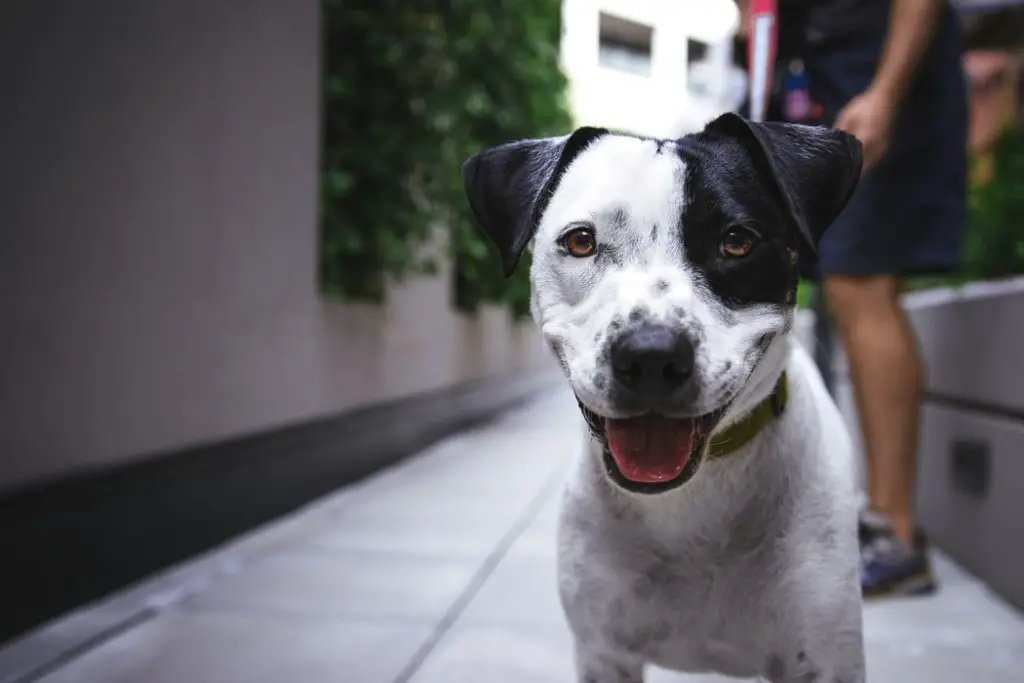
10 Key Points for a How to Take Care of a Dog
- Know your breed’s purpose.
- Prepare your home and minimize introductions for your adopted adult dog to experience a smooth transition.
- Proper nutrition is crucial to a healthy dog. Know what food is essential and what food is dangerous for our dogs.
- Be successful at house training your adult dog with a routine and abundance of praise.
- Incorporating physical and mental exercise into your dog’s daily routine will make for a healthy dog. You and your dog might explore the world of canine sports.
- Know your dog’s coat type and the grooming required to keep it healthy. Remember the importance of trimming nails and routine grooming sessions.
- Tips on adult dog socialization including small positive experiences.
- Dogs can get sick too. Know the common canine illnesses and work closely with your vet for preventative measures.
- Keep your dog healthy and help them prevent illnesses with the recommended vaccinations.
- Pet insurance is a budget-friendly way to afford routine care and emergency care for your dog.
By learning how to take care of a dog you can enjoy an enriched life with your canine companion!
“Be the person your dog thinks you are.” John W. Stephens
Please read our Legal Disclaimer

